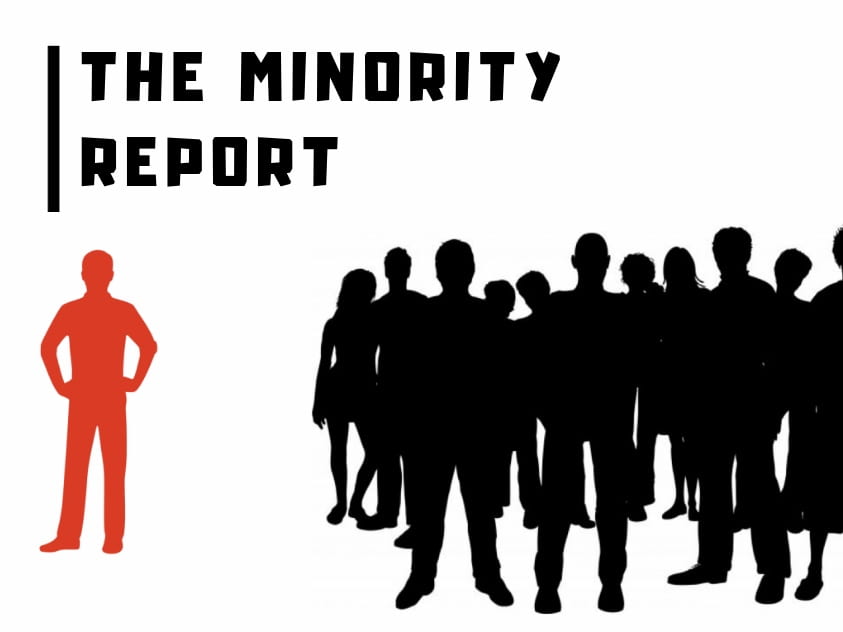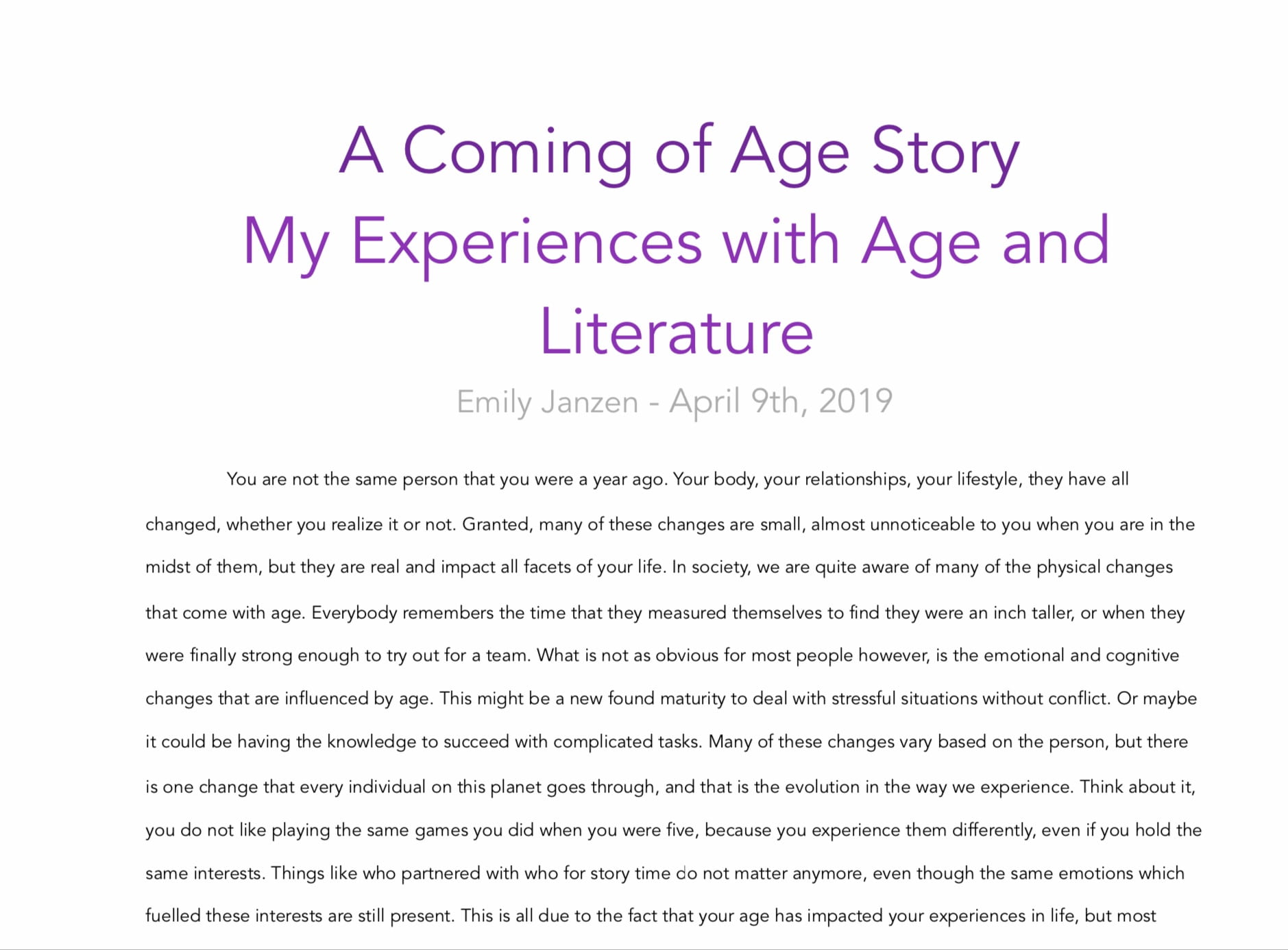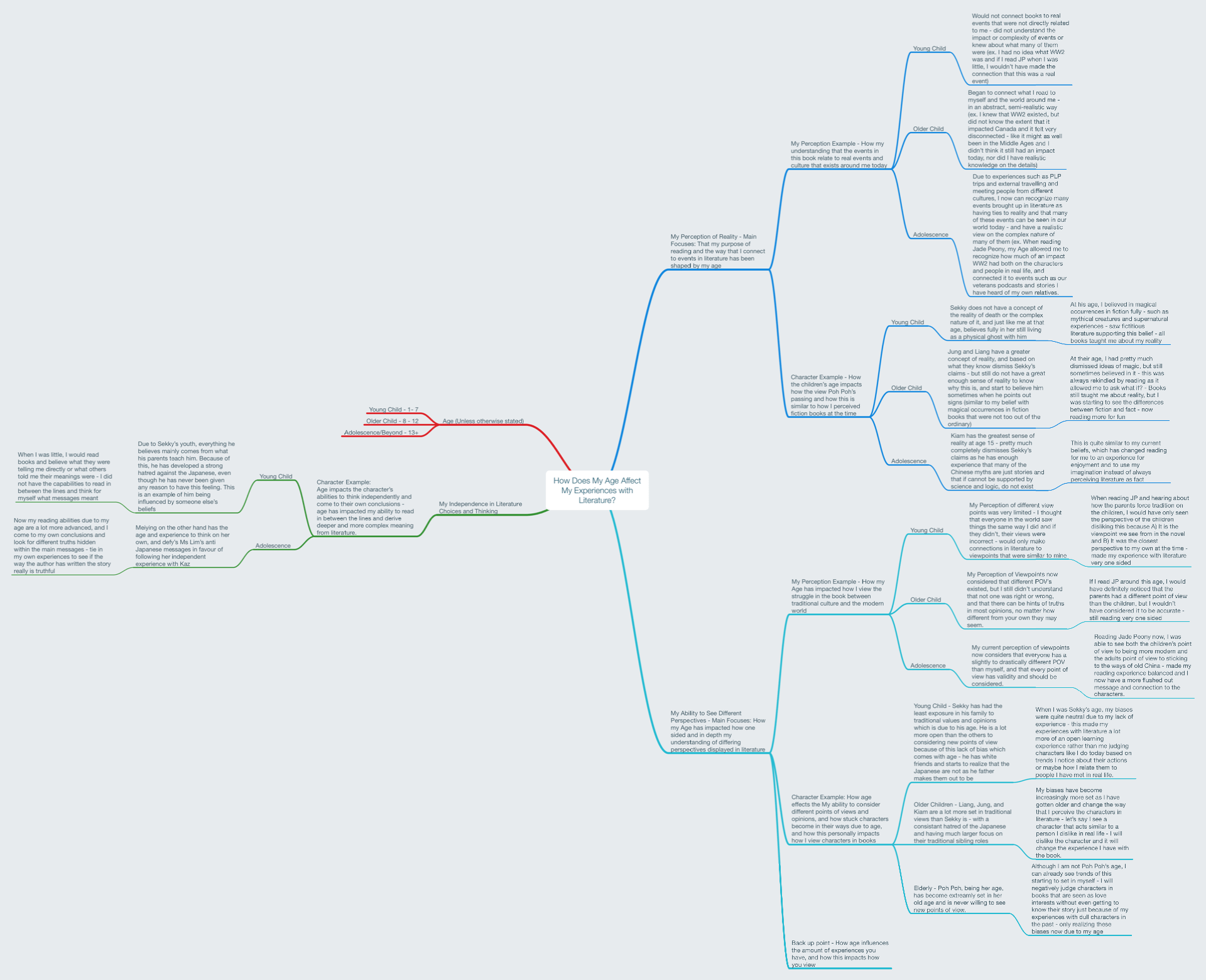Ah, the Canadian dream. It may not be as famous as the American dream, but it’s certainly up there. Just think of those post cards you will see, with the beautiful wilderness, the majestic waterfront cities, and of course, with kind, smiling people. This is the image which captures the imagination of thousands of immigrants who move to Canada each year. With pretty much all media portraying us as this incredible, diverse, accepting place, who wouldn’t want to come here? However, this image is not entirely accurate. While some people may live quite close to this “quintessential” lifestyle, many individuals have experiences in Canada that do not fit this mould. We see so much talk of widespread community, but what about for people who are part of a racial minority that is not represented in their area? We always hear about exploring our great wilderness, but what about people who it presents a great physical challenge to do that? Like most people, these were questions that rarely crossed my mind until about a month ago. My experience in Canada was all I ever had ever known, so why would I assume others’ would be different? Well, in our latest unit, my eyes were opened. I now see that the “Canadian dream” is really not experienced by everybody in our country, and that between the picture perfect communities and our accepting first impression, there are some deep cracks. This idea has been the focus of our latest unit, and in this post, I will share in this post my journey to this revelation, along with the skills and knowledge I developed which can help me explain it to others along the way.
The Canadian Visible Minorities
Are you part of a visible minority group in Canada? For those who are not, it can sometimes be hard to pinpoint who might fall into this category. The graphics I have created below will help explain this:

Due to their small numbers, many groups within the category of minority struggle to be represented in Canadian Society. This can be because of any number of reasons, from simple examples such as majority groups merely having more people who can voice their opinions, to complex, socio-political reasons (which I will explore in greater depth later in this post). However, a universal problem which we found impacted almost all minorities was a lack of awareness and understanding from the general public. Many people don’t understand the value, or even the presence of differences amongst groups separate from their own, which puts both parties at a great loss. In light of this, our class has worked to create two products centred around raising both awareness about minorities publicly, as well as discovering what internally makes our individual Canadian experiences similar, and different from those of minorities that we are not a part of.
Podcasts
A large focus of the PLP 10 curriculum is audio storytelling, which involves creating music, conducting interviews, and of course, making podcasts. Building off of the skills from our previous Humanities project, our class was tasked in groups with creating a podcast that included original music and interviews, but mainly focused around answering our first driving question of:

For this project, I was put in a group with Luca O and Maggie, and we were assigned the canadian minority of people with physical disabilities or conditions. The topic we decided to cover within this was individuals suffering from chronic pain, which turned out to be a good choice. Through our investigations, we learned that people with chronic pain typically suffer just as much or even more than people who have other disabling conditions, and the reasons for this being the case are actually quite shocking. If you want to know why spreading awareness about chronic pain in Canada was a good focus for our group, then check out our final podcast draft below:
The Chinese Canadian Minority
In the beginning of our unit, the extent of my knowledge about Canadian Minorities was at best what was listed on the graphic I created above. Even this knowledge was only developed when we started the unit, and I still had so many questions. What is the historical impact of minorities in Canada? Where do they live around us? Why are they a minority here, when in other places they might be the predominant culture/religion/race? I believe this lack of understanding was pretty universal within our class, so before we could get into developing our literary and audio skills to share what we had learned, we had to do some learning. Relating back to our CPR unit of Grade 9, we decided to start with a prominent minority in British Columbia, which are Chinese Canadians.

To give us some historical and culture context, our teacher Ms. Maxwell assigned us a book to read known as The Jade Peony, by former Chinese Canadian Vancouver resident Wayson Choy. The book follows the fictional Chen family through their daily life in Vancouver’s Chinatown during the 1930’s and 40’s, and was a riveting tale from page one. The only problem I had with the book was the disconnect I had from some of the character’s perspectives and activities, due to a lack of experience with traditional Chinese food and culture. Luckily, the teachers knew this would be the case, and booked our class a day trip to Vancouver’s Chinatown.

Going to Chinatown was like walking into another world. I honestly could not believe that this incredible place was sitting right in the heart of Vancouver, with many locations looking almost untouched from their states 100 years ago. Now of course, merely going to this location would be a fantastic educational experience, but in order to build upon our storytelling and podcast making skills, we were also tasked with creating a mini podcast which focused around the sounds we would hear during our excursion.
To kick things off, we had a great lunch of authentic Chinese food at Lin Chinese Cuisine, and then drove to the back entrance of Chinatown. After wandering some streets which looked like they could have been taken straight from a history book, we ended up at a restaurant known as Sai Woo. Famous for it’s unique and delicious “chop suey” dishes, this building has stood in Chinatown for over 110 years. In it, we were greeted by Chinatown historian Judy Maxwell, who was going to be our tour guide for the day.
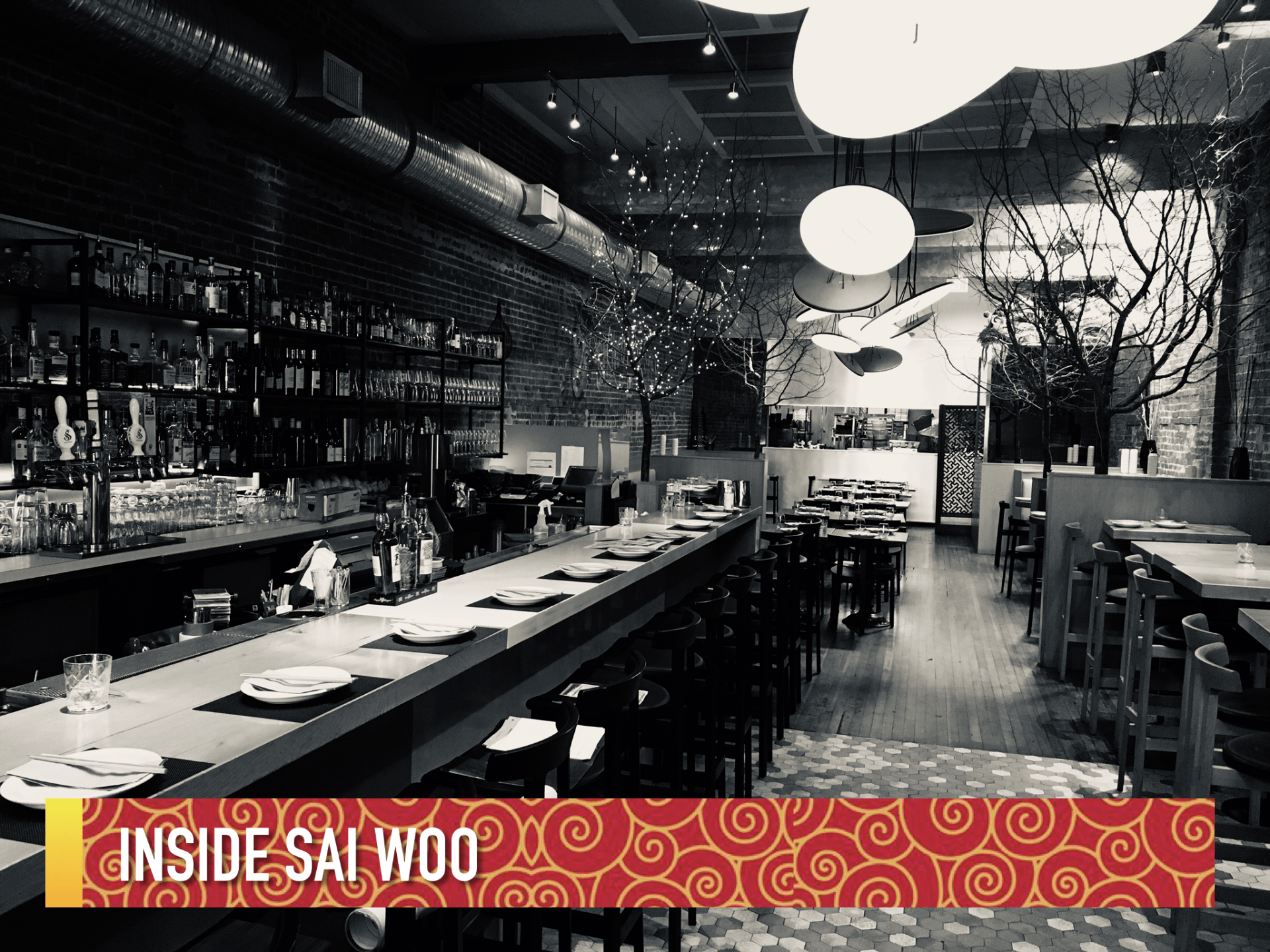
Before we even left the building, Judy dove right into the rich and impactful history of the Chinese in Canada. This is when I started to get some answers to the numerous questions I had, learning information such as in 1911, 98% of all Chinese in the Greater Vancouver Area lived in Chinatown, with many of their great grand children still living here today. We also were given a glimpse into why the Chinese are still such a minority here in Vancouver, even though there was so much immigration potential during the mid 1800’s.
As we explored in part last year, after the Canadian Pacific Railway was completed, and the excitement from the gold rush was fizzling out, the Canadian Government had no use for Chinese immigrants coming to work anymore, and started to enforce policies to prevent them from entering. What made matters worse, is most of the Chinese who could not return home were forced to live within Chinatown, which stifled any large spread representation that could have occurred in B.C. Learning about this lack of equal representation across the province, and the rest of Canada, was my first glimpse into the potential answer of our first driving question.
After we had a comprehension of Chinatown’s history, it was time to explore it in all of it’s modern glory. Some of my favourite locations which we went to that day were the Dr. Sun Yat Sen Classical Chinese Garden:
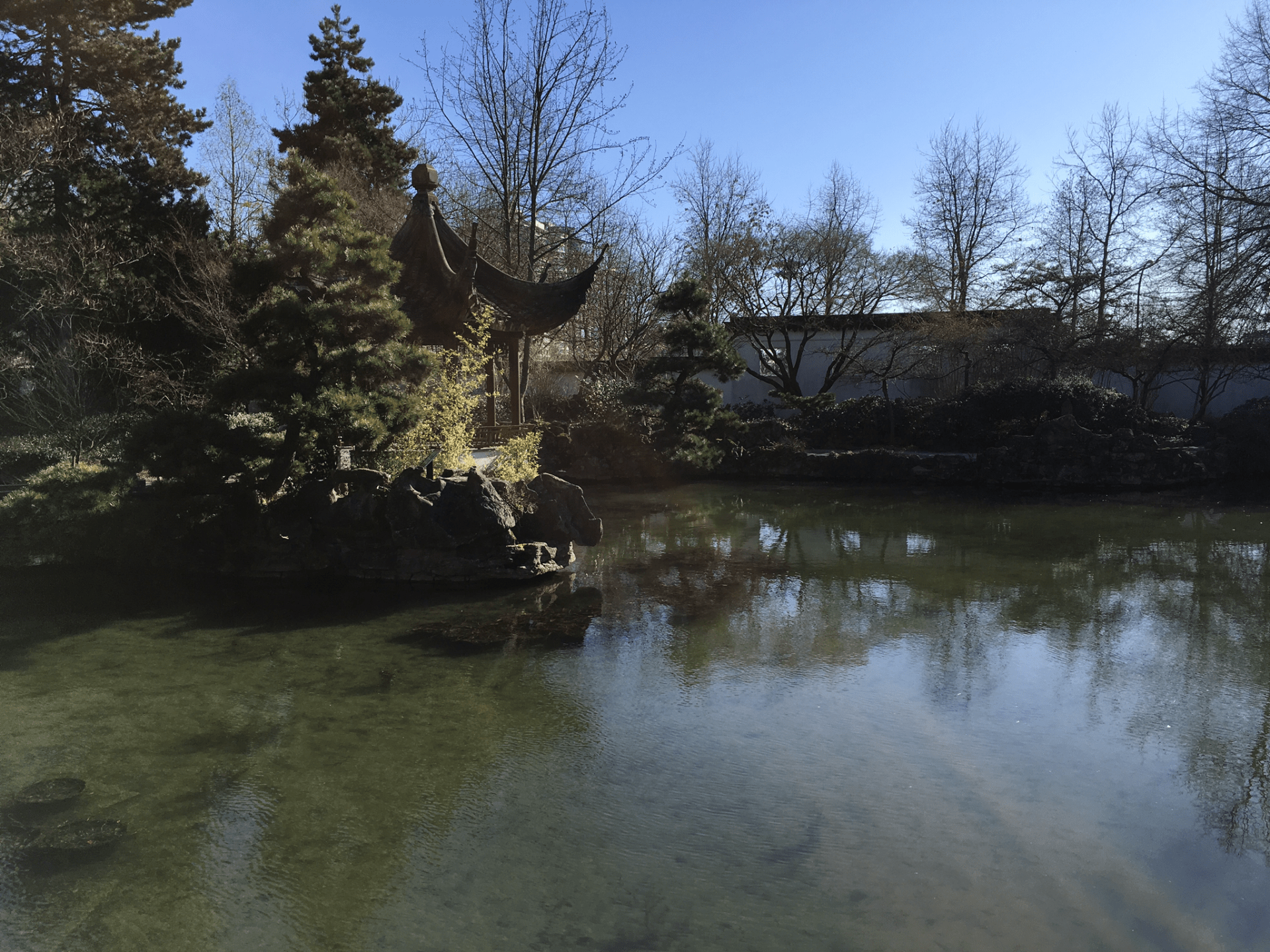
and the Chin Wing Sun Clan Association Meeting Room:
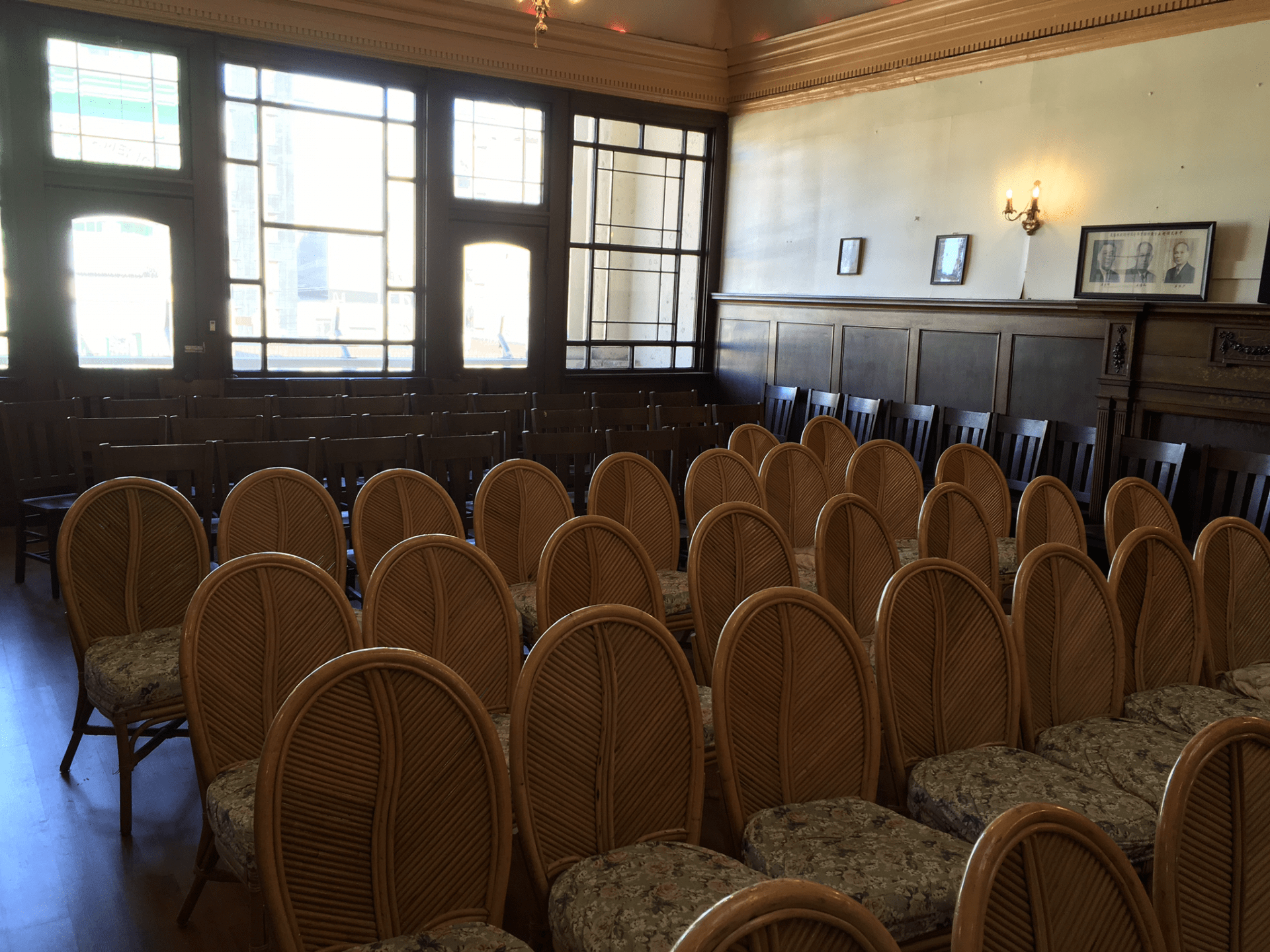
This tour could be described well as a whirlwind experience, as there was never a spot which we stayed in for more than five minutes. Luckily, this was an excellent opportunity to capture a diverse array of sounds for my podcast. At first, I was just looking for obvious chances to capture sounds, but after missing two or three excellent sound opportunities which happened by chance, I realized it would be best to have the mic recording at all times. This is something that I will remember for all future live event coverage, and wished I would have thought of during the filming of my first live event video.
This trip lasted almost a full School day, but to me it flew by. Everything we saw was so fascinating and beautiful; I really hope I can come back one day to see more of it. Luckily, I have a record of the entire day in my finished podcast, which you can listen to below:
Although capturing the sound is a crucial part of making a podcast, the real magic happens when you put it all together in editing, and I feel that this was the case with this one. I felt that the best clips that I had from the day were of Judy and her associate Steven talking, because I felt they conveyed powerful messages about the Chinese Minority. However, many of the files were just audio snippets, and out of context they made little sense. However, through some other audio I gathered during the trip, along with some themed music which I created in apple’s Garage Band (using the previously discovered loops function), I built up a story around those small clips. I set the atmosphere, I showed perspective, and because of it, I feel my podcast actually turned out better. In doing this, I learned the valuable lesson that to use language to it’s best, you can’t just focus on words, but need to consider how you can give those words context, and feeling.
A Deeper Dive Into Minorities – Canadian’s with Chronic Pain
Going to Chinatown was an eye opening, rich with learning experience. In part, it gave me some insight into the answer to our driving question, but it also left me with a plethora of new questions on the topic of minorities. Most of them were culture/race related (if the fairly prominent Chinese faced so many hardships sustaining their culture, then what was it like for smaller cultural minorities?), but there was also a good amount about invisible minorities. What is an invisible minority? Well…
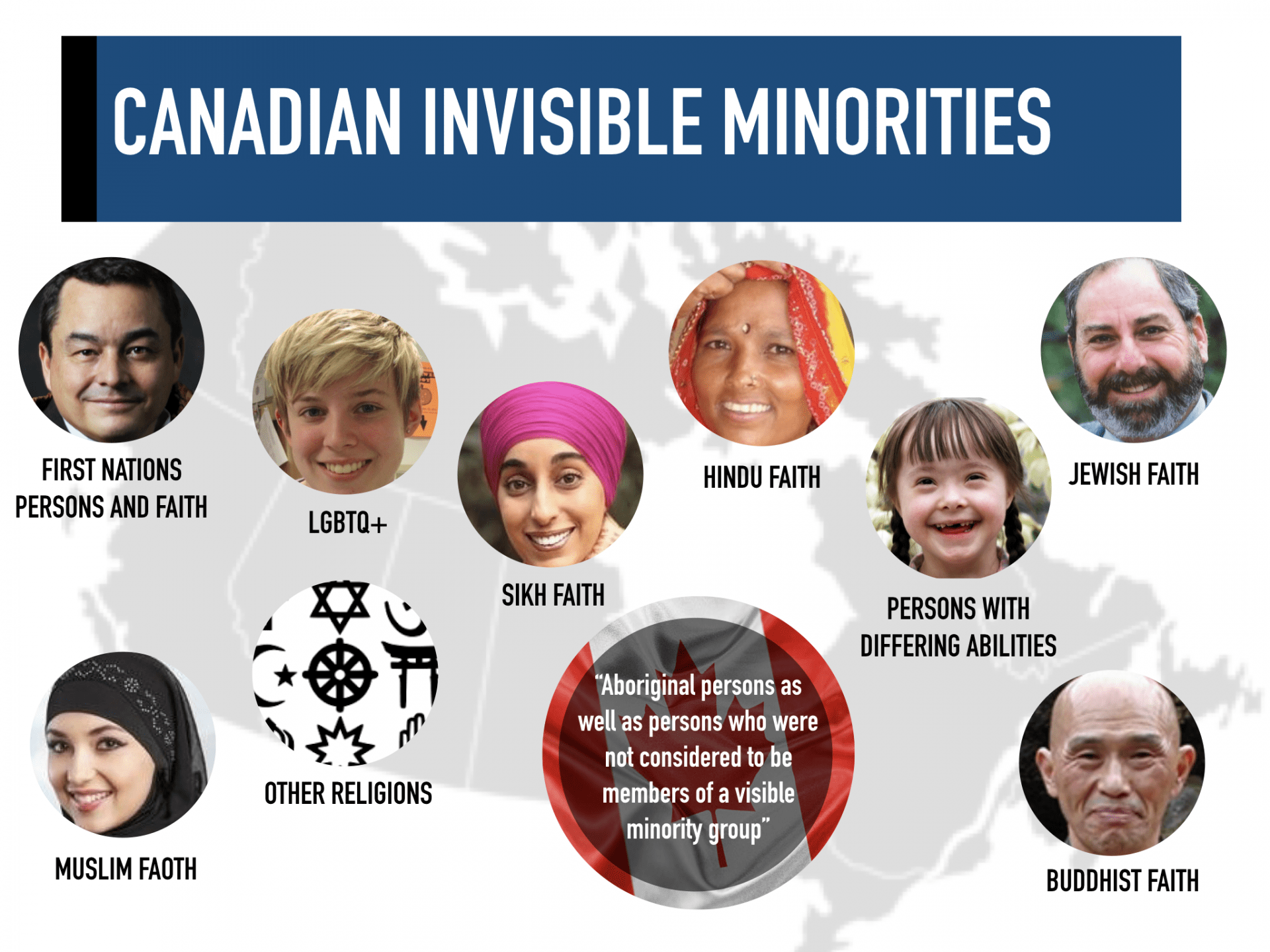
Many of the problems that Chinese Canadians faced were due to blatant racism, but what sort of problems would people who could hide their differences face? Could this hidden diversity actually be detrimental? These were the questions which drove my Minorities Pitch Paper, an assignment where we researched some minority groups of potential interest. Through this paper, I was put into a group which decided to focus on Canadians with the physical, but invisible disability that is Chronic Pain.
What I just covered was basically everything that happened before and after our interviews, but how did they actually go down? Well, the first interview I ended up conducting was with a teacher at our school who suffered from chronic pain. Thinking back to our interview with Mr. Svend Hansen from our previous podcast unit, and how the background noise in posed a huge problem in editing, I decided to conduct this interview in a quiet meeting room. This not only helped the sound quality, but made the interview feel so much more focused. Now the final product we got from this interview turned out to be great, but when it started off I noticed a problem. The teacher we were interviewing was giving us a lot of interesting information, but not a lot of it related to the direction we were planning to take our podcast in. This was when I learned another valuable lesson about language, and that is how you can use it to influence other’s thoughts and responses. Instead of asking a couple of open ended questions and hoping that the conversation eventually steered the way we wanted it to, I decided to instead start asking specific questions which were worded in a way that got the response we needed. For example, if we wanted to prove that the treatment for chronic pain is not as accessible as it needs to be, instead of asking:

we could say:

Another interview that I conducted was with a physician from Vancouver Island. Keeping what I had learned from our previous interview in mind, I made sure to ask him an array of specific and directed questions. I would say the info we got from him was the strongest due to this prior info. The only challenge with this interview was the fact that he was not available to speak in person, and was busy most nights. Luckily, I had already anticipated this remembering how unscheduled the interviews in Seattle ended up being, and was willing to be flexible.
For the week or so that was the initial recording and editing phase, our group worked tirelessly. We discussed, scheduled, wrote, and revised almost every day. My job in all of this like usual, was editing. I find it quite fun to take a variety of clips and other media, and try to see how I can most effectively meet the criteria with it, which is why I typically take on this role. Another one of my favourite jobs for podcast or video making is creating music, but I decided to leave this job for Luca remembering my ongoing goal of dividing work more evenly. This turned out to not only leave me with less work, but also helped bring a unique musical flavour to the podcast which would compliment my editing style.
Our Podcast’s Intro Song – By Luca O
After I had attained all the media, I got right to work on the editing. At first, I planned to do everything in Garage Band, but this idea presented the obstacle of fading difficulties. For those who don’t know, in Garage Band you can only fade in and out of clips by editing the entire line of fades before it, which is quite tedious. So, I decided to transfer all of my clips into iMovie for the fading, and then learned how to use an MP3 converter to transfer them back afterwards. This is a valuable skill that I can see having so many potential uses in the future. Another big part of editing for me besides the technical aspect, is the ambience and mood that you can set with it. Like I mentioned with The Sounds of Chinatown Podcast, ambience is an effective tool for boosting the power of a message, and I wanted to make sure that creating it would be my main focus. One way I did this was with the use of music. Now you might think that music is a given for any podcast, and that it’s an easy thing to just throw on top of it after it’s complete. However, to get the most our of it, you have to put a little more effort in. Music is much more powerful when used sparingly, so I only decided to put it on some clips. I also linked it to certain turning points in our podcast, such as when Luca begins to speak about history, to give them more power. Another way I created ambience was with pacing. Instead of trying to cram as many clips as I could into our time limit mark, I decided to instead cut out some of the less necessary parts in favour of having pauses and transitions. I feel that our product felt a lot more professional and was easier to listen to because of it.
Revisit, Reconsider, and Revise
Hurray! Our podcast is complete! Oh wait… it might be good to get some feedback first…
A day after our podcast first draft was submitted, it was time to dive right back into it for draft #2. Like usual, we had a group critique session before we could do this, and got the following notes:
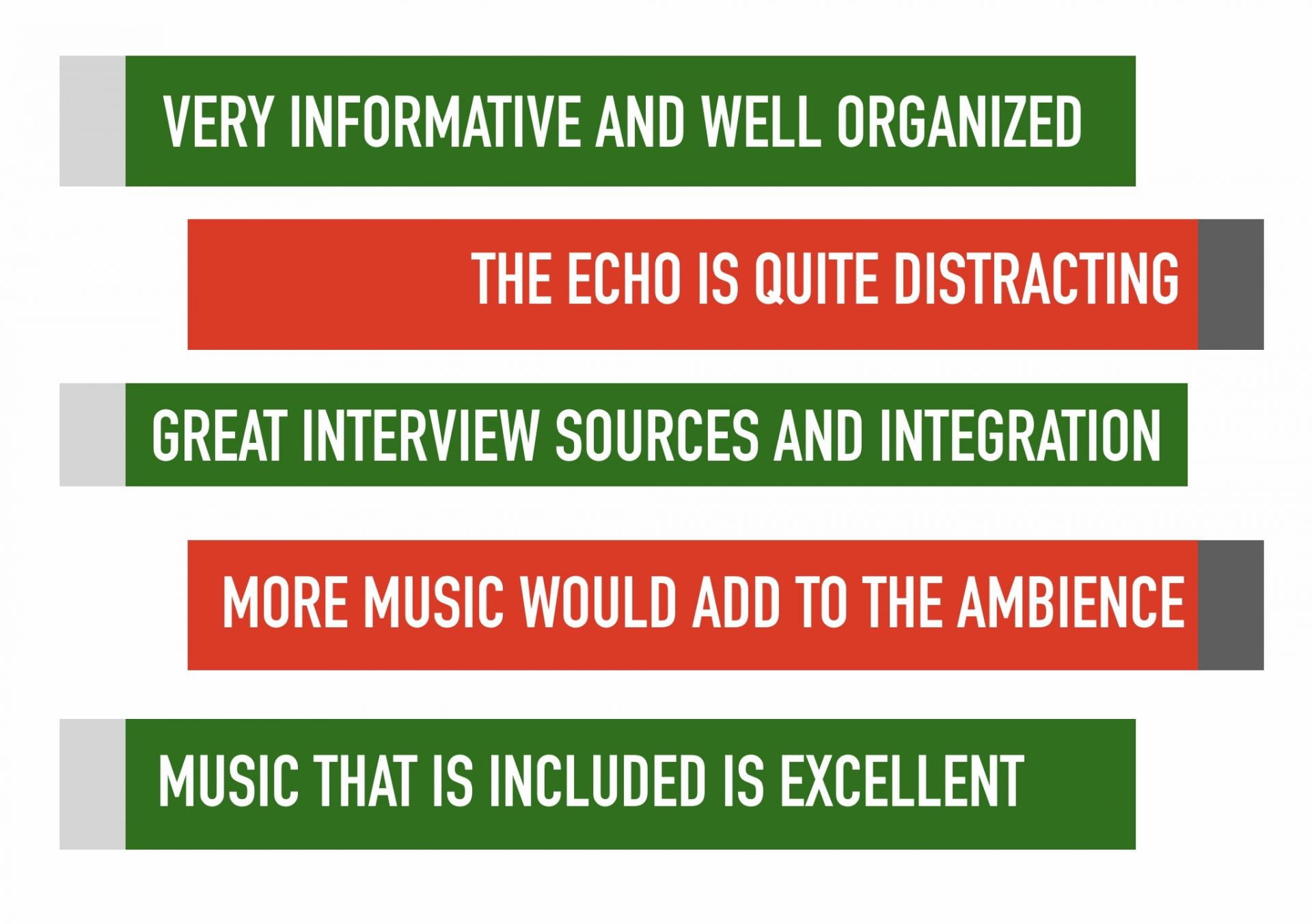
As you can see, there were a few things that definitely needed some revisions before our final draft could be submitted. Some of these were easy fixes, like turning off the Garage Band “vocal hall” function to reduce the echo. Some problems however, would require a little more time. One of these was adding more music, which I decided would be a good task to split between Luca and me. However, I also had to take on the secondary editing job as Maggie was away for the week, which put more work than planned onto my plate. I feel that this could have been avoided if we had looked into this issue much farther in advanced, and will remember this for future group projects.
However, it didn’t take too long to have our second draft completed:
At this point, our podcast product was almost at the end of the assembly line, but it still had to pass a few more inspections before being launched to the world. One of these of course was through our teacher, who gave us a few things to fine tune:
Once these were fixed, it was time to do the initial public screening with our interview sources. Sending the emails to them with our podcast linked was probably one of the most nerve wracking parts of this project for me. I was so worried that with both of our sources knowing so much about the issue, they may not think our podcast was any good. However, a few days later we got a response from the teacher:

We were so happy that our hard work was being appreciated, and are eagerly awaiting our second response. Of course, this also meant that our draft had passed the test, and was ready to be left as our final public product.
The Positionality Paper
The first half of this post covers the meat and potatoes of the unit, which of course was our minority driven inquiry and podcast. However, as we have recently learned in our PGP course, there is no use trying something without sharpening the saw first. What does this mean? Well, before we were able to dive into writing our complex explorations of the Canadian experience of others, we had to one, improve upon our writing skills, and two, understand our own canadian experiences a bit better. How we ended up doing this, was by reading the aforementioned book, The Jade Peony, completing writing prompts, and finally putting everything together into a paper which answered the broad, but thought provoking driving question of “How do our positions impact our experiences with literature?”. The final draft of my Positionality Paper can be read below:
Getting Started
How DO our positions impact our experiences with literature? Do they even have an impact? Why do they matter? What is a run on sentence? It was soon clear to our class that although we were developing quite a large knowledge base about other people’s Canadian experiences, we were a little bit lacking in both personal understanding and the capability to sharing this understanding through writing. To get the wheels in our minds turning, we were assigned three writing prompts; one about our age, one about our gender, and one about our location. In writing these, I started to get a sense of the positions in my own life which impact me:
I don’t usually like to write about myself, so these prompts were a good exercise to push me into reflecting on some new things. They helped me better understand about which experiences and points in my life made me who I am today. However, these prompts are far from perfect. If you have (attempted) to read one of my blog posts before, I bet you will quickly notice two large issues I face on here as well… That’s right, run on sentences and comas. As you can see, I like to write with a lot of detail, which can be both a blessing and a curse. For essays, this has been a particular problem for me, as for one, my sentences end up far over the length they need to be, and two, I end up having to break up these sentences with exceeding amounts of comas. These were not just a problems that I faced however, so our entire class was tasked with completing some worksheets on proper coma usage and shortening run on sentences. Now being in PLP, these grammatical worksheets were pretty much the blandest thing we had done all year, but I would be lying if I say they didn’t help tremendously. It’s funny to say, but I was actually a little afraid of short sentences. I worried that if I did not describe everything in perfect detail, I would not be able to convey my message. However, through these exercises, I was able to realize that a shorter, properly divided sentence can actually enhance the strength of a message, and I made sure to apply this idea concept when writing my paper.
During this stage of the project, we also spent time reading the novel, The Jade Peony by Wayson Choy. Along side of our minority focus, we were also tasked with searching the book for examples of positions which impacted the characters. With each chapter, more and more of these positions revealed themselves, and made me realize that there are so many diverse, complex aspects of our lives can impact our experiences:
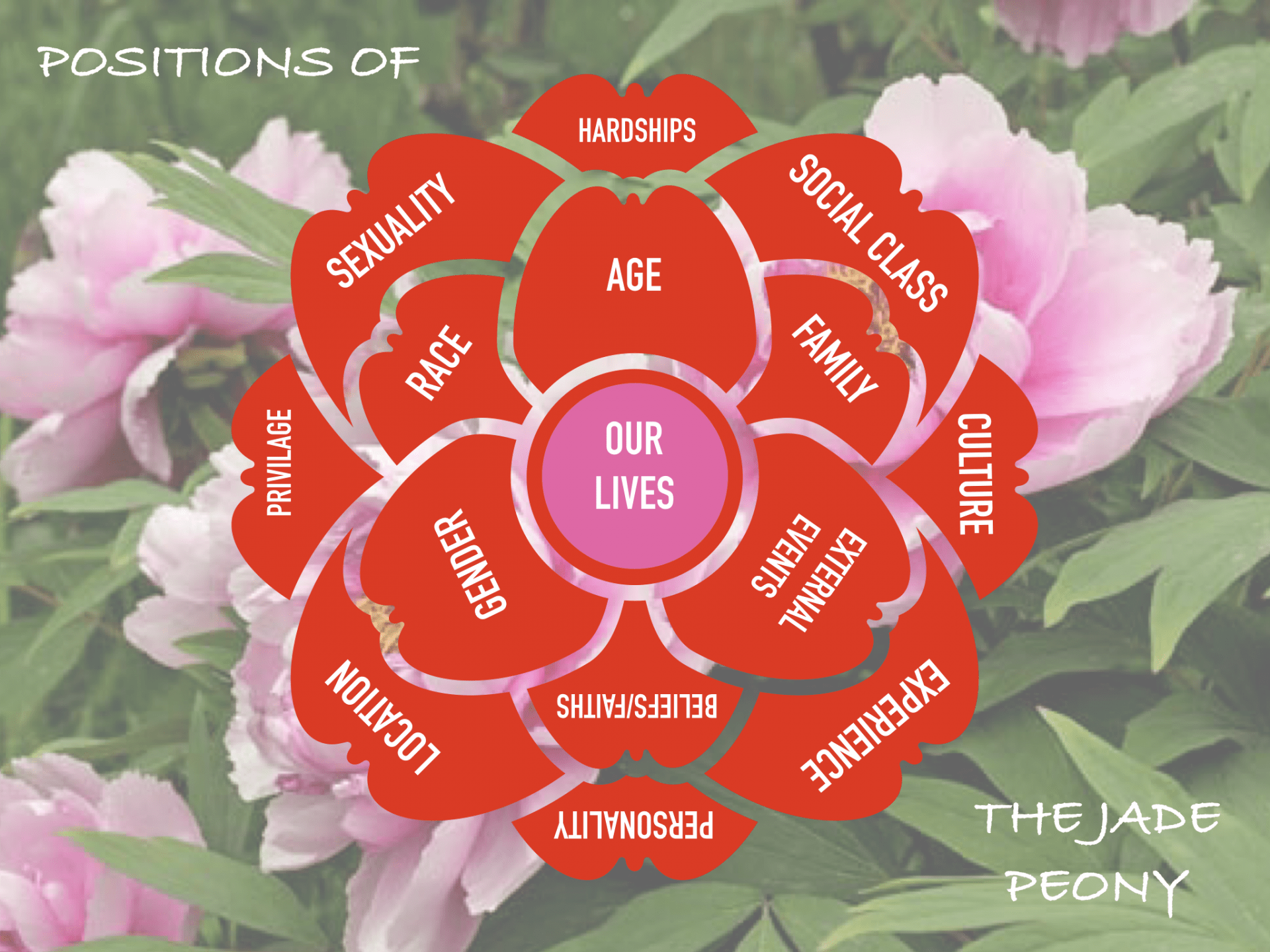
Creating our Papers
Once my grammatical machine was working at is finest, it was time to get onto the paper. Now the first step to this of course, was writing an outline. Due to the abstract nature of our second driving question, I actually found this stage quite challenging, as I didn’t know how to connect all of my ideas. Part of the criteria was to relate what we wanted to write about to The Jade Peony, but we also were encouraged to centre everything around a central topic. I decided that I wanted my topic to be age, as it has had the largest impact of my personal worldview in terms of understanding of reality and perspective, but this left me with few concrete examples from the book to touch upon. However, thinking to the PGP concept of paradigms, which is the way that things change based on how you look at them, I was able to approach this task from a new angle. Instead of looking for exact examples in the book of age impacting characters, I looked at all the things that impacted them. Then, I looked for how I could connect any one of these things to age, and myself. When I came at this task from this new angle, it suddenly made connecting everything easy, and my outline was soon completed:
Writing Drafts – Our In Class Essay
As you can see, my outline was quite long and detailed, and thinking back to my first essay of the year (which was part of our Seattle Unit) I realized that an outline this long would result in an essay that would be twice as long. To remedy this, I highlighted in my essay document the main points from the mind map that I would actually be covering, and left out what wasn’t necessary. I also wrote my intro and conclusion before I came to class, so that I would know in which direction I wanted my essay to head. Once I walked in the door for our essay writing block, I felt ready. After what felt like a short half hour block, my paper’s first draft was ready to be marked:
(will be added once technical difficulties have been dealt with)
In this draft there were still a couple run on sentences and misuses of coma transitions, which were pointed out to me during our peer critique. It was also mentioned that I have a tendency to over elaborate on points, which takes away from the flow of my writing. Recently, I found a good technique to fix this that I employed in my essay. What I will do, is review the sentence, and take out as many words as I can with it still making sense. Then, once it’s stripped down, I will see if can add one or two enhancing or descriptive words to re-strengthen it, and this creates a pretty good balance. Finally, with all of this in mind, my final paper draft (which you can view above) was completed.
Reflection
As I answered our driving question for this half of the unit within my paper, I will be focusing here more on what I have learned in terms of skills, knowledge, and areas of improvement. I would say the main skills which I developed during this phase of our project are sentence structure related, thinking back to the sentence shortening trick I developed. I also would have to say a big thing for me was learning how to deal with run on sentences with a simple period (I used one right there when breaking up these two points!). Another thing that I am happy with is how I stuck to my idea of age idea and made it work by looking at it another way. The typical Emily route when something doesn’t work is usually scrapping all progress and starting from scratch, but for this project I stuck with it and saved myself hours of work.
In this post, I have covered this unit in it’s entirety. I’ve discussed the knowledge, the skills, the experiences, the products, what went well…so what’s missing? Well, I haven’t yet talked about areas of improvement, and I can see a big one right now. No, it doesn’t involve the podcast or the essay, or even team work surprisingly. It’s actually involves this very post. One of my greatest downfalls as of late has been greatly over shooting what is needed for an assignment, and this post is a pinnacle example of this. Not only did it take me way longer than it should have to write, but it’s length makes it harder to connect everything together, and definitely harder to read. So, I am setting a personal goal starting right now, to focus on quality over quantity in my posts. The time that I spend writing three paragraphs can be spent improving one, or proof reading, or creating some excellent media. There is so many things I could do with that extra time, and I am currently working to make sure that shines in my next post.
But until then, thank you for reading
Sources:
https://www150.statcan.gc.ca/n1/pub/89-621-x/89-621-x2006001-eng.htm

